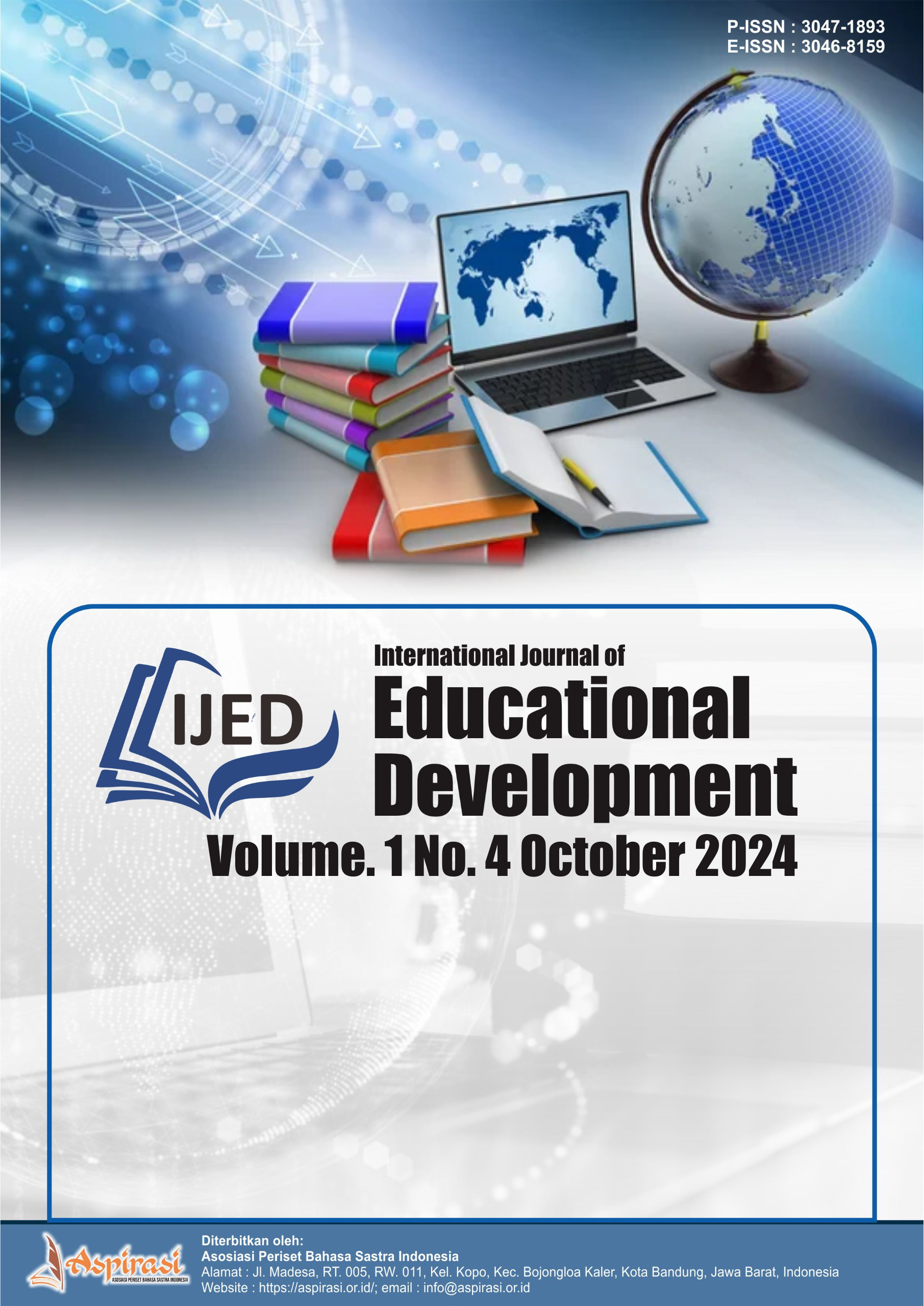Physical Fitness Analysis of Junior High School Students by Using Indonesian Student Physical Fitness Test (TKPN)
DOI:
https://doi.org/10.61132/ijed.v1i4.84Keywords:
Physical Fitness, Gender, Physical Education, TKPN (National Student Fitness Test)Abstract
Physical fitness is essential for supporting students' daily activities and learning. This study aims to evaluate the physical fitness of students at SMP Negeri 63 Surabaya, specifically those in class VII D and VIII C, and to compare it between male and female students. The research method used was non-experimental with a comparative design, and data analysis was conducted using the Mann Whitney test and Cluster Random Sampling technique. The instrument for measuring physical fitness was the Tes Kebugaran Pelajar Nusantara (TKPN) and a questionnaire based on the TKPN guidelines. The results showed no significant difference in physical fitness between students in class VII D and VIII C, with a p-value of 0.3 (p > 0.05), indicating that their fitness levels were relatively similar. However, there was a significant difference based on gender. Male students had better physical fitness than female students, with a p-value of 0.00 (p < 0.05). Male students were in the "sufficient" category with an average score of 2.05, while female students were in the "poor" category with an average score of 1.2. Overall, both class VII and VIII students were in the "poor" category, with average scores of 1.15 for class VII and 1.25 for class VIII. This indicates the need for improvement in students' physical fitness.
References
Ardiani, HE, Permatasari, TAE, & Sugiatmi, S. (2021). Obesity, dietary patterns, and physical activity in the management of diabetes mellitus during the Covid-19 pandemic. Muhammadiyah Journal of Nutrition and Food Science (MJNF) , 2(1), 1. https://doi.org/10.24853/mjnf.2.1.1-12
Arifandy, A., Hariyanto, E., & Wahyudi, U. (2021). Survey of physical fitness levels of junior high school students. Sport Science and Health , 3(5), 218–234. https://doi.org/10.17977/um062v3i52021p218-234
Destriana, D., Aryanti, S., Destriani, D., Syamsuramel, S., Ramadhan, A., Nanda, FA, & Lestari, R. (2023). Mentoring and technical guidance for Indonesian student fitness tests for PJOK teachers in Lahat Regency. Journal of Community Service , 1(9), 1960–1968. https://doi.org/10.59837/jpmba.v1i9.451
Ilyas, I., & Almunawar, A. (2020). Physical fitness profile of extracurricular volleyball students. Indonesian Journal of Sports and Health , 1(1), 37–45. https://doi.org/10.55081/joki.v1i1.297
Irawan, A., & Firtanto, N. (2020). Physical condition profile of the 2019 Jakarta State University Student League Futsal Team. Scientific Journal of Sport Coaching and Health , 4(2), 72–82.
Jayul, A., & Irwanto, E. (2020). Online learning model as an alternative process of physical education learning activities in the midst of the Covid-19 pandemic. Journal of Recreational Health Education , 6(2), 190–199.
Kristiyandaru, A., Al Ardha, MA, Ristanto, KO, & Nur, L. (2023). Health education during the pandemic: Physical fitness course applications and personal physical fitness test (PPFT) in university students. International Journal of Education in Mathematics, Science and Technology , 11. https://www.ijemst.org/index.php/ijemst/article/view/3578
Milana, M., Yunus, M., & Widiawai, P. (2022). Survey of physical condition of U16 SSB Porwing Putri athletes, Banyuwangi Regency. Sport Science and Health , 4(7), 608–615. https://doi.org/10.17977/um062v4i72022p608-615
Mutohir, TC, Lutan, R., Maksum, A., Kristiyanto, A., Akbar, R., Amali, Z., Suswantoro, G., Isnanta, R., & Pawiro, S. (2022). National report on the sport development index 2022: Sports, competitiveness, and data-based policies. Deputy for Sports Culture, Ministry of Youth and Sports of the Republic of Indonesia.
National, K., Facilities, P., & Level, K. (2016). Digital Library of Gempol Health Center, Gempol District, Cirebon Regency .
Rifaldi, M., Pitnawati, P., Ihsan, N., & Febrian, M. (2023). Physical fitness level of students of SMP Negeri 02, Suliki District, Lima Puluh Kota Regency. JPDO Journal , 6(6), 23–31.
Rifaldo, M., & Syach, B. (2024). Physical fitness level of male students aged 13-15 years. Porkes Journal , 7(1), 71–83. https://doi.org/10.29408/porkes.v7i1.25052
Rusdiana Agus., WO, Hamidie, R., G., K., Dadi, DAAMA, WA, FN, NR, RWK, & M, T. (2023). Guidelines for implementing the Indonesian Student Fitness Test (TKPN) . 1–38.
Sandi, IN (2019). Types of skills and sports grouping. Journal of Recreational Health Education , 5(2), 64–73.
Saputra, VW, Sari, KY, & Wibowo, RAT (2023). Physical fitness survey through the Indonesian student fitness test at SMA N 1 Plupuh in 2023. Jurnal Ilmiah Spirit , 23(2), 13–22. https://doi .org/10.36728/jis.v23i2.2819
Supriyatna, I., Fitri, M., & Jajat, J. (2019). Physical activity of male and female adolescents on car free day Dago, Bandung City. Applied Journal of Sports Science , 3(2), 32–36. https://doi.org/10.17509/jtikor.v3i2.10058
Syahrastani. (2022). Review of physical fitness of class VIII students of SMP Negeri 2 Kota Solok. JPDO Journal , 7(1), 1–10.
Downloads
Published
How to Cite
Issue
Section
License
Copyright (c) 2024 International Journal of Educational Development

This work is licensed under a Creative Commons Attribution-ShareAlike 4.0 International License.





